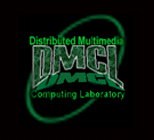Results
Congestion control protocols for VBR video:
The key problem is to design network protocols for video that
achieve efficiency by statistically multiplexing the network
resources, but avoid degradation in video quality caused due to
packet losses. We have developed protocols for transmitting stored
and live VBR video streams that meet this objectives.
Since end-to-end delay requirements for stored video are not very
stringent, our protocol for stored video transport shapes the
traffic such that the rate changes are regular, infrequent, and
predictable. The protocol then combines open-loop and feedback-based
control to: (1) provide heterogeneous QoS to clients in networking
environments consisting of switches that may not have any scheduling
support; and (2) migrate the functionality of discarding packets, in
the event of congestion, to the sources which understand the
semantics of the data. The protocol is efficient, makes very few
assumptions about the underlying network, is realizable on current
switching hardware (supporting FCFS scheduling), and is completely
integrated with the architecture of a multimedia server.
Our network layer protocol for live video transport is based on a
per link, hop-by-hop flow control algorithm. It: (1) minimizes
buffer requirement by adaptively allocating buffer at the switches
while ensuring that packet losses do not occur in the network, and
(2) minimizes end-to-end delay and jitter of frames.
Representative Publications:
-
P. Goyal and H.M. Vin, Network Algorithms and Protocol for
Multimedia Servers, In
Proceedings of INFOCOM'96, San
Francisco, Pages 1371-1379, March 1996
[
Abstract |
Paper ]
-
P. Goyal, H. M. Vin, C. Shen, and P.J. Shenoy, A Reliable,
Adaptive Network Protocol for Video Transport, In Proceedings of
INFOCOM'96, San Francisco, Pages 1080-1090, March 1996
[
Abstract |
Paper ]
|





